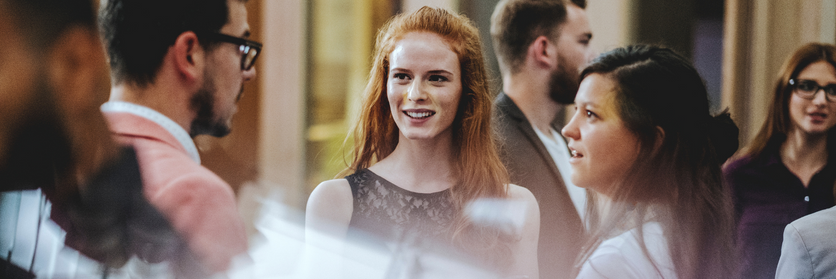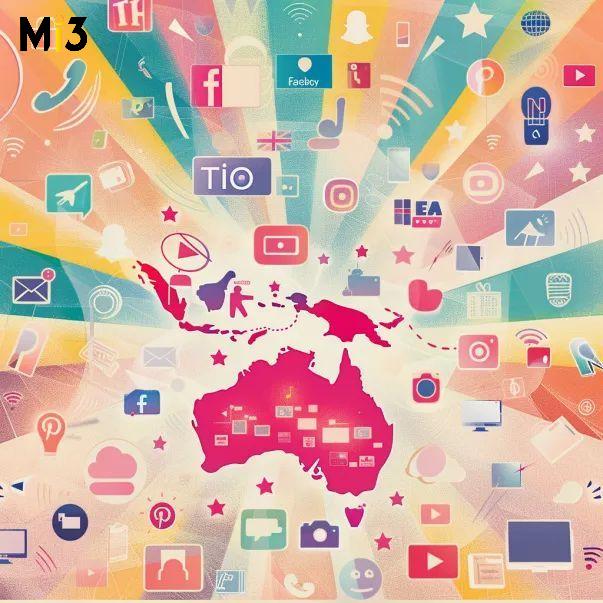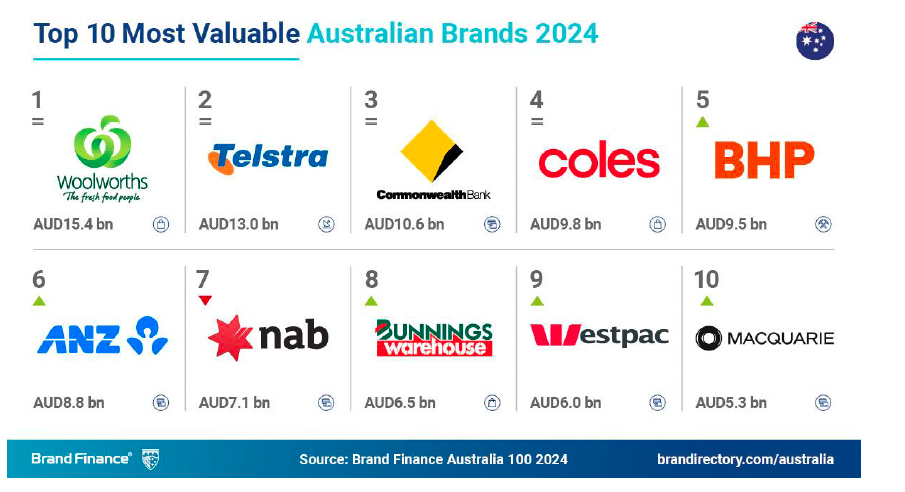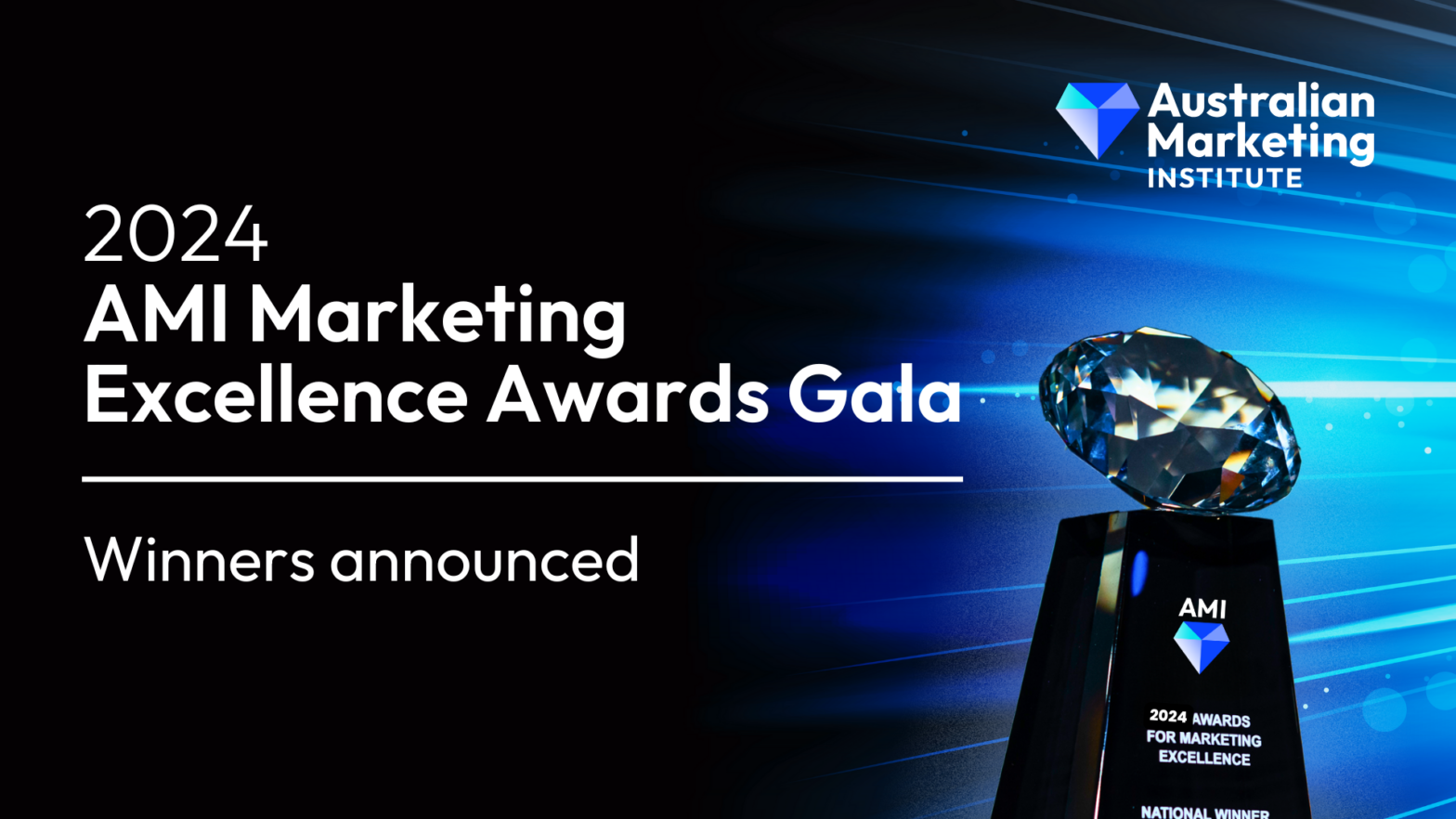Creative agencies gone by 2030? Brands and agencies working at the AI coalface: Gains, losses, watchouts from Specsavers, TBWA, Swinburne Uni, BetterBriefs
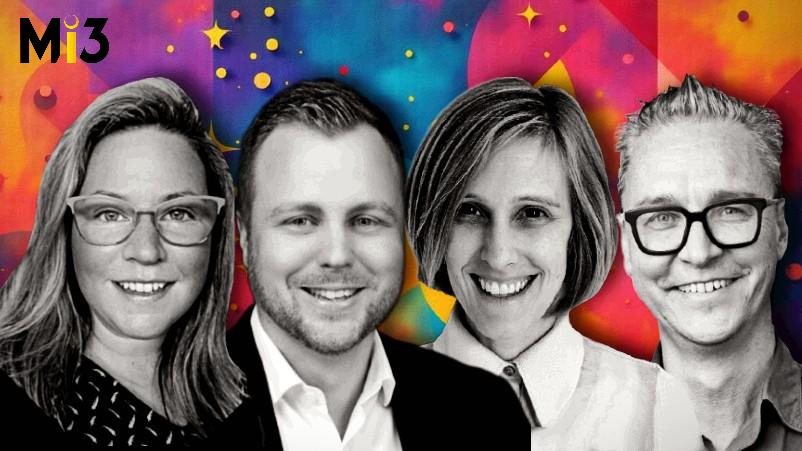
What you need to know:
- Mi3 canvassed marketers, agencies and consultancies to find out where they’re willing to use AI for creative output.
- Some are willing to go the whole hog, others have deep reservations.
- There is consensus on the middle ground – rapid process optimisation.
- But that means different things to different people.
- Specsavers, Swinburne University, Australia Post, ATime&Place, TBWA, Forethought, BRX and BetterBriefs weigh in on where to go hard, when to take precautions and where next for brand, briefs, creative and execution.
Yes we can, but should we? It’s the burning question when it comes to AI infiltrating the creative ideation, testing and production process. Mark Zuckerberg’s plans to do away with the humans, agencies or brand strategy for that matter and replace it all with a continuously optimising loop of content created by the algorithms isn’t quite here yet. But as was seen onstage at this year’s Cannes Festival, the tools and desire to try is now among us. A brand built from scratch in 24 hours by an AI SaaS platform owned by $4bn Brandtech Group, complete with tagline, ‘chew your mood’, scored in the top 10 per cent of campaign creative within System1’s testing database.
(Though to be fair, a cow chewing cud for 30 seconds scored in the top 50 per cent in the same database. Read into that what you will.)
Either way, local marketing execs are increasingly curious about AI’s role. Several are willing to see what AI can do in every aspect of the work, tapping new platforms like Forethought’s BrandComms.AI to expedite brief formulation, creative ideation. In some cases, they’re letting the machines create the ads for testing and even external market consumption.
So Mi3 canvassed the marketers, agencies and consultancies to find out where they’re willing to use AI for creative output, if they’ll go the whole hog and put agencies completely out to pasture, or if they’re wondering why we’re even attempting to replace humans with machines to make creative in the first place.
Here’s their take.
To be able to test something that was much closer to a full, conceptual piece of advertising gave us more confidence, and it allowed us to then invest more I think, into the creative proposition – it was more about proving the value early so we had more confidence in the creative direction and value of the investment.
What the CMO thinks: Swinburne Uni’s AI creative foray
Part one of Swinburne University’s work with Forethought was to use its AI data solution to ingest all brand choice driver modelling, audience and value proposition to come up with a creative brief for its next campaign. In part two, the uni employed Forethought’s BrandComms.AI platform to create new ideas around its creative territories, build these creative assets, then test them with audiences against key brand metrics, including proximity and accessibility.
Forethought’s BrandComms.AI tech combines generative AI, AI agents, plus the research consultancy’s longitudinal database of 30-plus years of creative testing, consumer behavioural and advertising insights into a platform that, it claims, can create advertising end-to-end. Notably, it’s being sold on guaranteed creative effectiveness, a two-week turnaround and with an average 82 per cent cheaper price tag than traditional creative solutions.
There are many others touting similar capability and outcomes, but globally, BrandComms.AI is gaining the attention of a raft of brands and being used for some, if not all, parts of the creative ideation, testing and final campaign asset production.
Locally, Swinburne is one of three examples of creative idea generation and animates through to testing. T2 teas meanwhile, is one of two examples of brands commissioning BrandComms to go direct to market with no production. There is also a US brand on-board for the whole shebang.
How that plays out will be interesting to observe.
In Swinburne’s case, the work was instigated by former CMO, Carolyn Bendall, who told Mi3 at the time the decision to pull in AI was prompted by being more data informed around what territory to explore in its next-gen brand campaign.
“It was going back to what we empirically know, going through all of the brand tracking, choice driver models, which we’d done across five different segments. No one creative strategist can necessarily take all that into their brains and come up with the idea,” she said. “For me, it was a great opportunity to see if we could leverage AI without replacing anyone’s role, but give us something that ended up taking quite exciting shape.”
Swinburne’s creative agency partner is ATime&Place, which spun out of Deloitte Digital last year and is headed by Adrian Mills and Matt Lawson. Bendall admitted the concept of bringing AI to the brief, then creative ideation process, had been “quite challenging for the creative agency”.
“But they’re the starting points, not the end points,” she said. “It’s then about having real, good, trusted conversations saying we’re not trying to take over your role, and we’re not disrespecting the role of creative. But we are trying to employ AI to give us some insights and a lead ahead.”
Swinburne’s campaign, ‘On your way’, was produced by ATime&Place and went to market in mid-June through TV, digital, social, outdoor, audio and owned channels.
Two and a half months is too short to judge growth impact, but the Uni is won over from a process perspective.
“The cohesiveness of the brief I saw come out from that process was more rounded and sophisticated than what I’ve seen my own team produce,” Swinburne Uni executive director of future students and marketing, Chris Lewis, tells Mi3. “Without meaning to put them down, it just covered more of what I felt we needed to achieve: The construction of the concept itself, and being able to link that back to our choice driver work and what we needed to achieve in that space, was all there.”
What was especially interesting for Lewis was being able to create the draft campaign assets solely using AI. “Being able to produce some proof-of-concept work in a cost-effective manner we can then validate with humans in a fast way – that to me was the real value,” he says. “We were not removing the humans, but actually supporting them.
“To be able to test something that was much closer to a full, conceptual piece of advertising gave us more confidence, and it allowed us to then invest more I think, into the creative proposition – it was more about proving the value early so we had more confidence in the creative direction and value of the investment.”
Lewis admits what AI generation came up with and where Swinburne’s final creative proposition landed “isn’t necessarily revolutionary”. The creative device is a familiar one – a student getting off the train and a sliding door opening on to their future.
“I think this would be the pushback from creative agencies: It’s not unique. But actually it’s very true to what we need to land for our brand, what the research is telling us and what our briefs are aligning to,” says Lewis. “It probably allowed us to use a device and model that exists and really see that it was going to resonate and solve the problems we were trying to solve. So I was comfortable with that.”
Lewis also points out Swinburne was testing a more factual, logical connection to key selling points of accessibility, access, and broader education offering. “It was helping students understand we can land that proximity, but we’re also part of the journey and you can see all of your future tracking up ahead of you,” he says.
In Swinburne’s case, the proven concept was then handed over to ATime&Place to inject emotion. “I wouldn’t call the AI-generated animatics clever. I think where we have landed though is true to that concept but adds more of a compelling, humanistic, clever lens to it,” Lewis says.
“Our previous brand iteration was very futuristic and animated. Part of my brief was to bring the humans back. That was the hook for our agency – to say the concept is there, the concept is tested, but actually, can you bring the emotion and connection for the audience into this? Because we still feel we lack that and that was the challenge for them to solve.”
Swinburne will shortly commence brand tracking to see how the final creative is landing in market. Meanwhile, Lewis’ view on AI’s role through the creative production process is “fluid”. At an organisation-wide level, he’s on the uni’s AI governance working group, and notes the “whack a mole” scenario confronting tertiary providers as AI permeates learning and education.
“That’s going to be a brand tension in our role of education and as a technology university,” he says. “This is going to be dictated by our audience and what resonates with them.”
What’s interesting is the swing-back younger students have begun exhibiting against technology, with more showing up to class in-person and rejecting tech to a certain extent in favour of more traditional values, Lewis comments. But there’s no doubt using AI has sped things up dramatically for Swinburne. “There’s the step at the start to get that alignment – we had significantly less back and forwards,” Lewis says.
“We already had a concept we’d signed off on. I haven’t discussed it specifically with ATime&Place, but I feel it gives them more creative licence to charge ahead. Because we’re literally all on the same page – conceptually, we’re right there, we can see it, then it’s tinkering around, trying to bring the emotion into it.”
Lewis can also see where AI in idea generation “could be contestable” for other brands. “It worked for us, and the device worked well. But I could see a world where if you wanted to be really adventurous and push the envelope, that would be less effective. I’m not trying to push us down in that sense, but we are a university,” he adds.
When it comes to advertising, Don Draper himself will tell you one of the most powerful words is ‘new’. Humans have this desperate need for novelty. Advertising, at its best, is doing something that people haven't seen before. It’s saying things in a way they haven't heard it before, or revealing an insight that’s always been there that we hadn’t actually realised is true of ourselves. The best advertising is far from derivative, it’s always additive.
Creative agency: AI is derivative, but an accelerant
ATime&Place co-founder, Adrian Mills isn’t anti-AI – the agency has been embracing AI tools largely for bottom-of-funnel work and as an accelerant given the volumes brands now have to produce, particularly for platforms that penalise brands pushing the same creative by crimping reach.
“With work that doesn’t necessarily need to open hearts and minds, then sure,” he says with a shrug. But for higher, strategic work? A firm no.
“If you’re doing the higher value work, I can tell you every single person I employ is more insightful than any of the generative AI strategy tools,” Mills argues. “Yes, AI can come to propositions and strategic territories, but it won’t come to a strategic proposition or territorial position that hasn’t been done before. It logically cannot.”
Which is true, based on current AI models that synthesise and aggregate work that has gone before. But for process efficiency, there is no argument – of done properly.
Mills points to very different perceptions, hopes, ambitions or interpretations of the AI opportunity around creative out there right now depending on the cohort you’re talking to. Technologically minded marketers or tech platforms? There’s hope the creative component of advertising or marketing will be done with the press of a button.
“You’ll have an instant, easily built content schedule with all ads automatically sized and made and they’ll be on brand and it will have happened in moments,” he comments.
“The truth is you should be able to do that. I’m not saying you’ll be able to do it with any kind of quality, and I’m not saying the creative will be a multiplier on the media investment cost, but you should be able to make stuff, for sure. If you talk to people who see creative as an adjacency to their business, such as a research firm or strategy business, they’ll tell you AI now allows them to make the advertising themselves, and it’ll be powered by the insights they’ve got, and the years of research they’ve done, and it’ll be exactly what consumers want. Most of that is plausible, but none of that is true yet. And none of it is possibly true of the future either.
“It misunderstands the absolute truth about generative AI in that it’s actually poorly named. It is not generative. It’s derivative. It is derived from everything that already exists. And when it comes to advertising, Don Draper himself will tell you one of the most powerful words is ‘new’. Humans have this desperate need for novelty. Advertising, at its best, is doing something that people haven’t seen before. It’s saying things in a way they haven’t heard it before, or revealing an insight that’s always been there that we hadn’t actually realised is true of ourselves. The best advertising is far from derivative, it’s always additive.
“So, yes, people can make advertising through generative tools. Whether that is good remains to be seen … You can see the potential might be there. But right now, it plays a role as an accelerant and a really good accelerant.”
An example is ATime&Place finding a role for AI in distilling information with clients to make it easier to understand and ultimately, “more likely to be bought”. But here again, Mills cites raises an adjacent issue in the natural cynicism of consumers.
“People are naturally cynical towards AI-generated work, and it’s multiplied by people’s natural cynicism towards advertising. It creates a cynical black hole you have to avoid when you’re doing work,” according to Mills. “It puts so much more emphasis and onus on the idea being good, original and unique, and ironically, AI helps us sell that. That’s super exciting. So you can visualise things better and go, yes, that’s awesome, let’s go make that.”
Practical content making is nevertheless being shaken up and the speed at which production can run is definitely accelerating thanks to AI. Mills points to the recent Suzuki ad, made in a couple of days, which was fit for purpose, as well as lower-funnel Black Friday sales advertising.
“It’s exciting for a couple of reasons, but for creators, they actually get to make more of their ideas. Because in the olden days, the greatest risk the marketer took, typically, was actually making film or making television commercials, because it’s the least guaranteed work they can do,” says Mills. “We can derisk that, which is pretty cool, and it allows us to make more.
“And the truth about media at the moment is you just need so much more content than you used to. The fact we can now make more ideas at a time when we actually need more ideas means the stars align.”
Overall, Mills doesn’t see agencies disappearing either.
“Marketers still need agencies. As we have seen with in-housing in general, a lot of marketers have realised they didn’t want to be studio managers. The problem with in-housing is you don’t tend to get the incremental effort you tend to get from an advertising agency. In-house teams don’t like to work harder or longer hours than the rest of the team, which advertising agencies are typically geared up to do,” he says. “With the sheer volume of things we need to make, I just think that relationship remains as strong as it has been. That said, there will still be both [models] plus hybrid.”
And that high-value work, “the stuff we know really needs to multiply the media investment”, and the stuff you need to make people feel something and make them feel differently about your brand? That’s still going to need a pulse, Mills adds.
“I think Coke [Christmas campaign] is a really good example of how emotionally barren AI tends to be. But for the rest of the content that we need to make? We’ll find the fastest and easiest way to do that.”
If you've had all the fun stuff taken out of your day job, and you're really just an account service person, are you going to attract good talent? Are you going to retain good talent? Are you going to have people who are satisfied by where they work? I don't know. Are people who are satisfied by their work more likely to do better work? Yes, we see that all the time.
Specsavers’ AI lens
Specsavers ANZ director of marketing planning, Shaun Briggs, is another marketer who has started investigating AI and the role it can play across the creative process. However, he’s much further away from the coalface where AI is producing the final output autonomously. His initial use cases are typical to where many marketers are exploring AI currently: Grounded in gaining speed and efficiency. For example, Briggs points to utilising AI to help with the briefing in of “obtuse” visual ideas.
“But are we sitting here thinking we’re going to take the path Coke took and completely generate creative? [Even Coke’s CEO has expressed major doubts about its approach] I don’t know. We’re a human brand that is about making ear and eye care more affordable and accessible for more people,” he says. “At Specsavers, you’re talking to a human who is understanding your lifestyle, your symptoms, your concerns. It doesn’t naturally feel like it [AI generated content] fits with who we are as a brand.
“We want AI to be the Roomba that vacuums the floor, while we choose the colour we’re painting the walls.”
Briggs’ other caution is a cultural one. He questions whether handing over creative ideation and production completely to AI is the best decision for marketers and businesses looking to retain happy, engaged employees and a robust culture.
“You’ve got to be careful you don’t technology out the satisfaction people get out of their jobs as well,” he says. “We have 65 people out here that work with us on this. Our job is to support our partners and do that in a really enthusiastic, positive way. If you’ve had all the fun stuff taken out of your day job, and you’re really just an account service person shuffling stuff from one place to another, are you going to attract good talent? I don’t know. Are you going to retain good talent? I don’t know. Are you going to have people who are satisfied by where they work? I don’t know. Are people who are satisfied by their work more likely to do better work? Yes, we see that all the time.
“I think you run a real risk of regressing to a meme and having a whole bunch of six and seven out of 10 people who are just doing six out of seven out of 10 work for everyone doing a six or seven out of 10 results. I don’t know that as a human that satisfies all of our needs. We got through a bunch of work – cool. Did you have fun? No. Did you learn anything? No. Were you inspired by another human? No. Did you share something with someone else that inspired them? No. Are you going to stay here for much longer…?
“I’m not saying no to AI, I’m just saying it’s about using it for the right thing. Experiment for sure, but never lose sight of your customers, what you’re trying to do, what’s important to them, and what matters to your brand.”
AusPost opts for ops over imagination
Australia Post GM Enterprise and Brand Marketing, Aimee Dixon and Bridget Cleary at creative production agency BRX describe their shift to AI as pragmatic rather than visionary. There’s much talk about AI, not enough on automation, they argue.
AI is being embedded first in production, then in governance, and slowly in brand strategy. The change is cultural, commercial and, above all, operational. The payoff is measurable efficiency. The risk is loss of control if governance lags behind automation.
Australia Post’s problem was a familiar one for marketers: too many campaign assets, too little time. The solution was to encode brand decisions into templates and let algorithms produce bottom-of-funnel variants. As Dixon put it: “It’s really about creating a platform where all that conversion-type marketing can be seamless. And not just seamless—we’ve also spent the last six months working with BRX to build out the brand guidelines, shaping how we think things should show up.”
According to Dixon, “it’s now the standard for all campaigns, so my marketers don’t have to manually check bottom-of-funnel assets, it’s automated. Since we’ve approved the brand guidelines, we can generate a wide range of activity across campaigns, and then let the algorithm determine which ones are more likely to convert.”
Importantly, it didn’t take too long for Dixon and her team to recognise they were onto a winner, at least in terms of asset creation. The payoff was basically immediate, she told Mi3 in this accompanying story.
“The first round of creators came out. Wow. Okay, it’s good. It looks clean. It’s given us variations that we wouldn’t do in a normal campaign,” she said.
BRX applied similar logic. Cleary mapped an annual torrent of assets, pulled legal and partners into the process, and automated what she calls the “commodity tasks they used to do.”
“What we wanted to focus on was automating the Australia Post brand into essentially a brand operating system. So it’s not really about AI. It’s more about how you look at the process behind all the assets created over a year, and the need to make them better, then smarter, so that the smart people on their end are freed up to do higher-quality work instead of acting as the brand police.”
According to Cleary, “They don’t have elongated approval processes where people like legal or partners make changes, because you’ve brought them into the process and custom-built an operating system that works for them.”
“We hear a lot about AI, but not enough about automation.”
There’s also an important element of future proofing to the work, said Cleary. “It also means you’ve got a framework that’s very high craft and quality, by which you can then start to integrate AI more, because you’ve got that great ecosystem that creates all the 1000s and 1000s of assets that you do every year.”
Procurement was pleased too, since Australia Post is getting much more bang for its buck.
Per Cleary, “Australia Post haven’t reduced our fee, but we’ve got what we call a 30 per cent efficiency dividend… 30 per cent more this year for the same price because of all of these things that we’ve integrated or created for them.”
The lesson for executives is obvious: start with the grind. Automate the permutations where rules are clear and waste is visible. Free up talent for work that affects strategy and brand. Then measure the savings.
My first point is this: Why on earth would I put AI in to replace Michelangelo?
Holdco view: Man v machine
Omicom-owned TBWA recently installed former Seven and Optus marketer, Lucio Ribiero, an early adopter, innovator and proponent of using AI, as its chief AI and innovation officer. He’s just built the first of what’s expected to be numerous productised AI services for the holdco, dubbed Rise, set to help brands optimise their presence inside large language models. TBWA’s fee-based Rise service is now being piloted and the first results are expected by the end of the year.
But Ribiero doesn’t believe AI should be doing the full creative job.
“Every time I have a conversation with a client or prospect, I always ask the question: ‘Great, you want to use AI in creativity? Fine, we can find a way. But why?’ There are so many other places we could put our attention in AI that would be much more relevant and impactful than the one that will probably be the least impactful of all,” he says. “So my first point is this: Why on earth would I put AI in to replace Michelangelo?
“The whole process of creative execution is long – it starts from hypothesis, goes into acquiring information, research, analysis, improving our hypothesis, then writing, briefing, condensing, decoding information, coming up with creative that signifies that information, going into production and so on. I am absolutely in favour of implementing AI, but implementing generative AI for creative? It’s not the same, and I don’t see the point. I’m more in favour of implementing AI for data acquisition and research than actually implementing generative AI through the creative process.”
It’s also arguably against what the agency stands for, Ribiero continues. “TWBA’s position is we fight convention through disruption. Fundamentally, anything generative AI is convention. Because it’s out of the average, accessibility. It’s the way the thing operates,” he continues.
“Generative AI in creativity in my view limits, it does not empower. AI is a powerful enabler, but I find it really hard at this point in the evolution to replicate originality, cultural intuition, emotional nuances. These are all the things folks like Mark Ritson and Byron Sharp talk about – differentiation, distinctiveness.”
Where Ribiero does see a wealth of applications for AI is in collaboration in production, variations, maximisation and initialisation – all areas he’s looking to build out further solutions under the TBWA umbrella.
“I find this whole proposition of magic button to do all creative with gen AI bullshit. I’ll just call it – it’s bullshit. It takes craft, different tools, a gazillion prompts and the final result is still not at the level it should be,” he adds.
Every Blockbuster franchisee who made a living out of it, was against streaming. But nothing could stop it. The problem for agencies comes down to one thing: They have a retainer and charge by time, then have this elongated process to get you a campaign. We take 14 days. We don’t charge by the time, but by successful campaign. That’s the future: We guarantee this will be brand building and will create performance.
Creative agencies gone by 2030?
Directly arguing against this is Forethought’s AI-powered, autonomous creative engine, BrandComms.AI, crafted off the back of 30 years of category insights and marketing science methodologies. Forethought chairman, Ken Roberts, once worked at Kodak in marketing for 10 years, and was also in the US when Blockbuster collapsed. These days – and he should definitely know it – he calls disruption when he sees it.
“I was on a panel and Russell Howcroft asked me, what proportion of business will exist for creative agencies by 2030, and I said zero; 100 per cent will be gen AI,” Roberts says. “But hang around with the creative fraternity, who are imagining all these products don’t exist or argue how AI won’t work. At the moment, the argument is it’s not original… it’s not capable of great creative thought, or eliciting emotion. All of those things, objectively measured, are 100 per cent wrong.”
Zero is a big call – and one that will be proved right or wrong within the next few years,. For volume production and performance work Roberts might be right. But for brand campaigns that appears a stretch. But five years is a long time in media.
Either way, Forethought is currently piloting its end-to-end AI solution with brands in three ways. The first is where AI does the job of providing assurance to the client of what the creative brief should be. Once crafted by AI, the brief or first draft of creative then gets handed over to a creative agency to develop the final campaign.
Backing this up is the firm’s Content Store. Roberts calls it the “secret sauce” – a proprietary database it’s spent millions on constructing, which includes all brand data and Forethought IP, and also ingests media plans and a number of brand and category codes. It’s this that’s doing the weighting and back-end work to enable creative to be produced. As many other firms and groups pile into similar turf, he says several elements of the assets have now been patented.
The second client use case is using Forethought’s solution in lieu of an in-house agency. “Our clients are telling us we’re about 80 per cent cheaper and 75 per cent faster than using the external agency,” Roberts claims. “The third use case is what we call ‘the long tail of neglect’.”
Roberts cites examples where brands are briefing its gen AI to fill a gap where localised campaigns are needed to shore up market share, but the budgets, marketing team or portfolio mindshare isn’t there to produce them. In one example shown to Mi3, fully AI-generated campaign work included 200+ digital assets across all different specs and by segment to tackle a local market use case. According to Roberts, the 100 per cent AI-generated spot was the best-performing spot for the client for the last 10 years.
In another client example, Forethought tested 67 campaigns, with its AI-generated campaign coming in at number two of all campaigns tested that year.
Up to 28 AI agents are working in the background, each assigned within a broader workflow to perform specific tasks and in concert across the creative ideation, testing and production process. All have been trained over a year to autonomously create ads.
“They are against it, and of course they are,” Roberts says of creative agencies. “Every Blockbuster franchisee who made a living out of it, was against streaming. But nothing could stop it, it was the time and the price. The problem for agencies comes down to one thing: They have a retainer and charge by time, then have this elongated process to get you a campaign. We take 14 days. And we don’t charge by the time, we charge by the successful campaign. That’s the future: We guarantee this will be brand building and will create performance.”
Others are less sure, with some industry insiders suggesting retainers are quietly on the comeback as brands realise they need more strategic input and hands on the tiller as creative volumes explode.
But Roberts is unbowed. He points to another underlying tension point that exists within the current creative framework and that AI will solve: That of agencies working ‘off brief’.
“We have a language for the creative agency not listening to us as brand owners, and the language we use is ‘off brief, off brand’. Those two expressions are used by brand owners to describe creative that has nothing to do with the brief. One of the things that happens in the category now is that most creative briefs are written by the creative agency, whereas the client brief and creative brief should be written by the client, in my view,” he says.
Which is true, if the client knows how to write a brief. But more often than not, that’s not the case – creating a $200bn black hole globally, and wasting a third of brand budgets.
AI has to be used with the right intention. If standardisation is the intention, we’re going to have to be very careful to not produce more homogenous advertising that blends in the background – there’s already too much of that. If it’s used as a tool to crunch data, recognise flaws and inconsistencies in brief and creative work on the road to clearer, more concise choices that don’t just play it safe, then we’re all for it.
BetterBriefs Beware standardisation
Which brings us to the experts in briefing itself. The BetterBriefs team has made it clear sub-par briefing between client and agency remains a serious challenge.
Four years ago, its groundbreaking report found $200bn is being wasted by marketers because of dire briefing processes. In a fresh creative ideation report, BetterIdeas project, released earlier this year, the dollar figures were less front and centre but the findings and message were similar: We have whopping capability gaps in this industry when it comes to generating and evaluating creative ideas. As a consequence, 75 per cent of agencies and 54 per cent of marketers agree most creative work doesn’t stand out.
So there’s an argument to be had around whether injecting AI into the creative briefing and ideation process, might actually help the industry. But in many ways, BetterBrief co-founders, Pieter-Paul von Weiler and Matt Davies, don’t believe it will – yet.
“A brief is a set of choices. Good briefs summarise those choices and all the thinking a brand has been doing. We don’t believe AI is in a position yet to make those choices and write a brief for us – to an acceptable standard,” the pair tell Mi3. “Who knows where we’re going to be in future, but at the moment, it can’t make choices for you. Good briefs still require decisions made by a skilful and trained marketer. However, AI can definitely be used to improve elements of the brief.”
The pair also concede AI can help set sharper objectives. “Get AI to analyse the relationship between brand health data, customer behaviour and commercial results. How much more would you sell if consideration goes up by five per cent? Understanding the linkage between commercial, behavioural and attitudinal metrics is where AI can play a valuable role.”
But ideation is where von Weiler and Davies hold up the danger sign.
“AI struggles to evaluate creative ideas because it lacks human intuition, cultural context and emotional nuance. It’s awesome at analysing data but it struggles to assess originality, humour or creative impact like a skilled professional,” von Weiler says.
For Davies, there’s another watch out: Using AI with the intent of standardisation. “We might find ourselves staring at a future not too dissimilar to how cars are designed today: Design by wind tunnel and the principles of aerodynamics alone. And in this way, the flair of certain brands has been lost, every care looks the same on the road,” he warns.
“So AI has to be used with the right intention. If standardisation is the intention, we’re going to have to be very careful to not produce more homogenous advertising that blends in the background – there’s already too much of that. If it’s used as a tool to crunch data, recognise flaws and inconsistencies in brief and creative work on the road to clearer, more concise choices that don’t just play it safe, then we’re all for it.”

